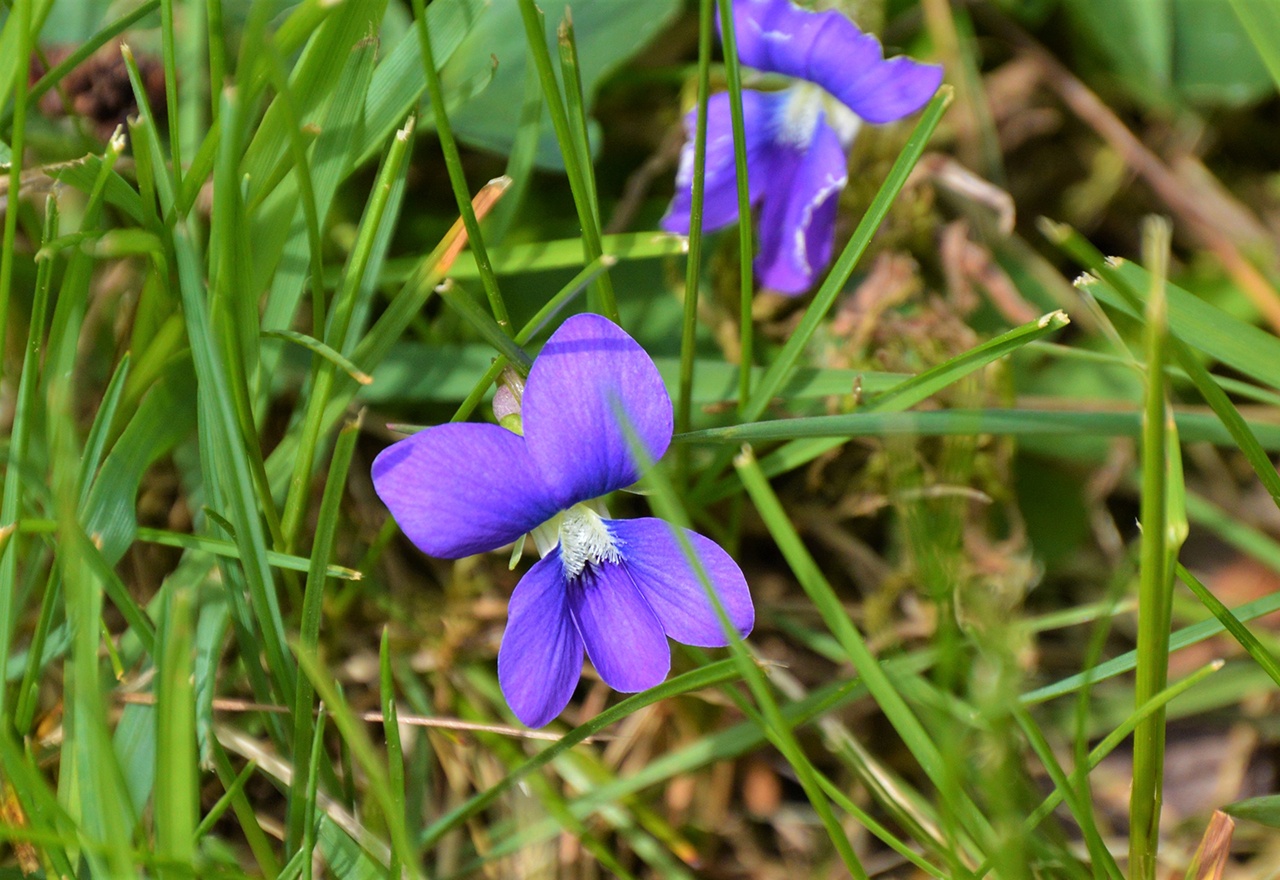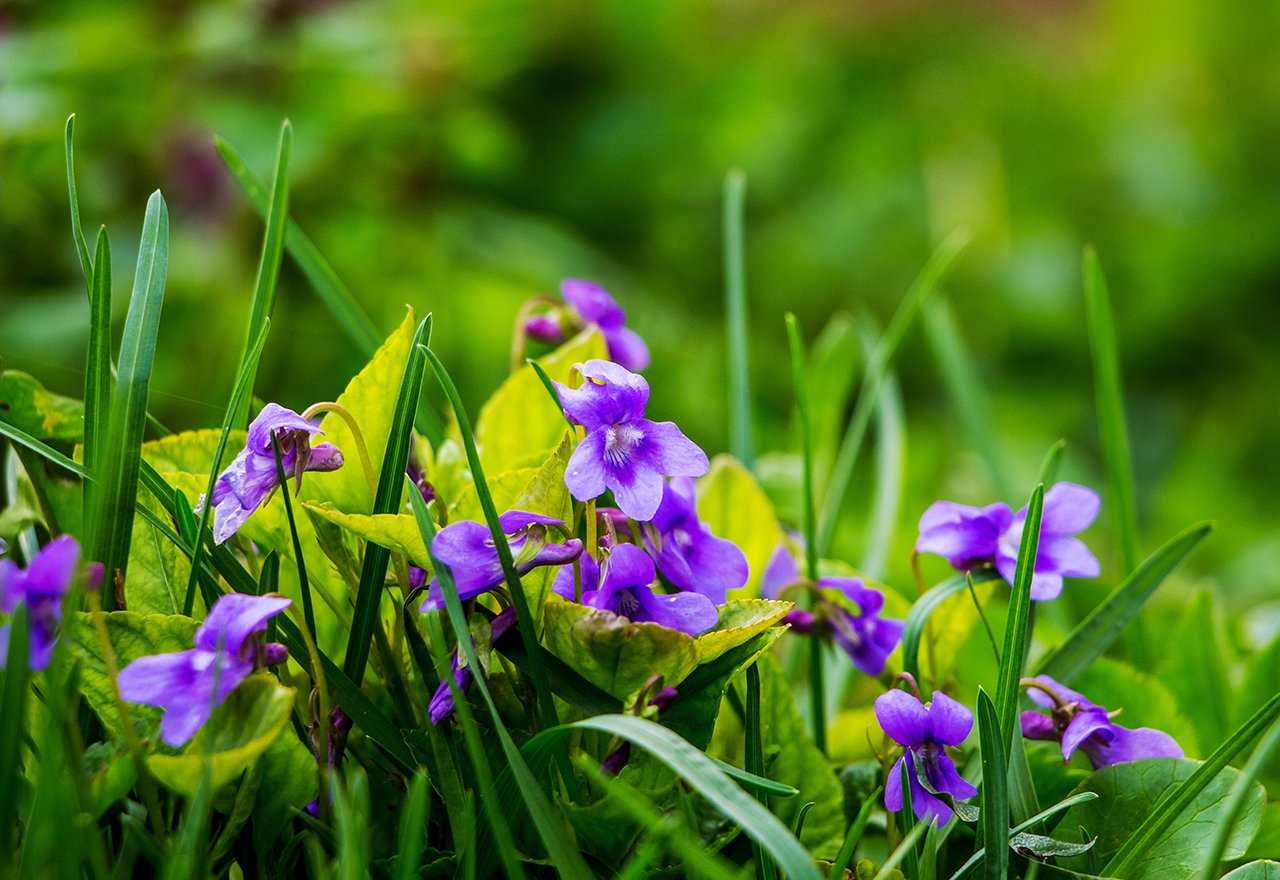A Perennial Weed with a Purple Flower, Found in Shaded, Damp Areas

Wild Violets are perennial flowers with predictably dark purple flowers that bloom in the Spring. The flower color can vary from white or very light purple to blue-ish purple to dark purple and sometimes even yellow. They have low-growing waxy, dark green, heart-shaped leaves that form a cone. The leaves do not lose their color in the Fall or Winter. Their short stature ensures that lawnmowers do not cut their leaves. Their petite flowers attract pollinators in the Spring and Summer. Wild Violets grow in USDA Hardiness Zones 3-9.
Wild Violets grow best in shady, moist, and fertile soil. They spread via underground root systems and seeds. Seed pods grow in small capsules at the base of the plant that look like they might bloom into flowers. Wild Violets form large colonies, connecting via their underground roots: rhizomes. They often occur in newer developments that were previously wooded or in established yards with forests nearby.
Wild Violets are really hard to get rid of. Hand digging can work if there are just a few clumps, but it’s tiresome and you must fully remove all rhizomes, which is very hard to do. Fully removing sod and establishing an entirely new yard will definitely work. However, we recommend enjoying the pretty purple pop of color in your yard and the constant green leaves they provide.
Weedkiller is rarely effective on these plants because of their waxy leaves. Some strong chemical-based weed killers that we do not recommend sometimes work, but not always. When attempting chemical control, it’s best to apply the weedkillers in the Fall when they aren’t actively growing.
To prevent Wild Violets, make sure your grass is thick and healthy so there’s no room for these weeds to take hold. Do not overwater to promote the moist soil Wild Violets prefer. We recommend mowing high so your grass roots are strong and deep. We always recommend adding Microclover to your lawn to feed your soil and keep your grass healthy.
Wild Violets are not poisonous to dogs – or people!
Wild Violets are safe to eat! Do make sure you correctly identify any and all plants that you forage before eating them. Violets are often used as a garnish on wedding cakes or other desserts. Flowers can be crystallized with sugar or used on their own. Violet jelly, liquor, syrup, vinegar, and tea are all common uses. Leaves and flowers together are often eaten on salads. Leaves can also be added to soups or stews. Violets provide both vitamins A and C.
Wild Violets can easily spread through their rhizomes and often grow in clumps. They spread happily and quietly on their own. However, it is not normal for an entire yard to be taken over by these dainty flowers. They spread, but they do not crowd out other plant species entirely.
There are more than twenty violet varieties native to Ohio! They have been here long before European Settlers. Wild Violets are also in Canada, Europe, and Australia.
The flowers of Wild Violets are an important pollinator species for our bees and other pollinating insects. Their leaves are eaten by rabbits and deer while roots are foraged by mice, voles, turkey, and other wild game birds.
Sometimes, the same Wild Violet plant may produce flowers of a different color when the soil composition has changed. Violets with very acidic soil will have a much darker purple flower.
